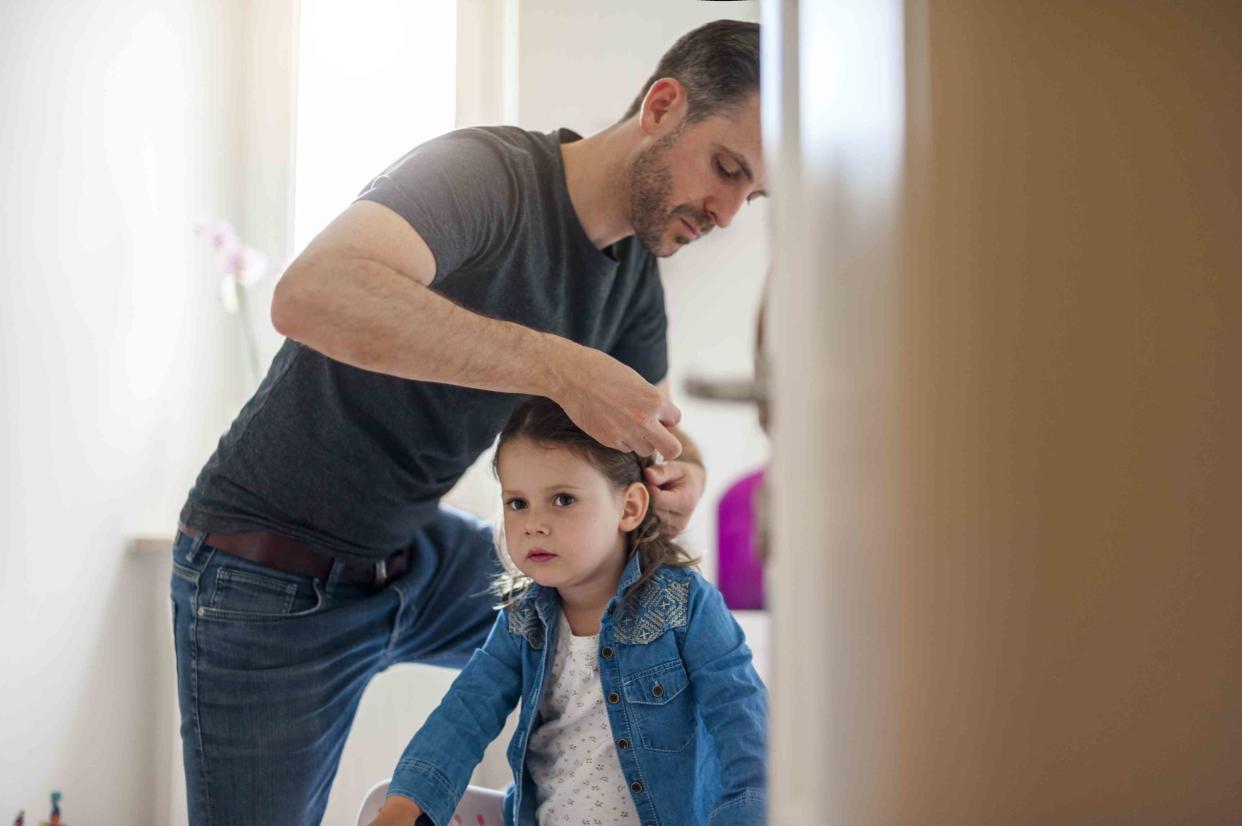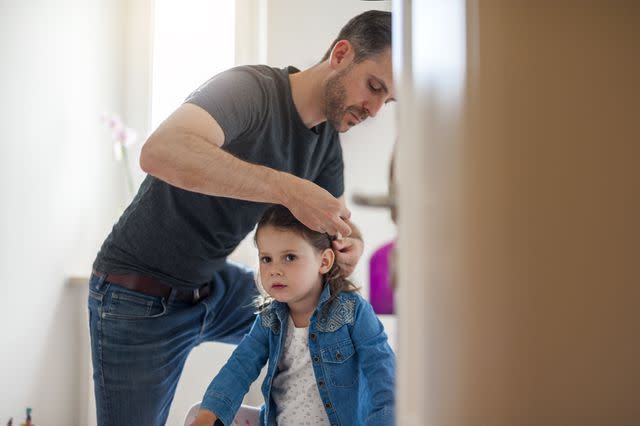Why Do Some Children Get Uncombable Hair Syndrome?

Westend61 / Getty Images
Medically reviewed by Leah Ansell, MD
Uncombable hair syndrome is a rare medical condition that causes the hair on the scalp to grow up and out instead of downward. People with this condition can’t comb or brush their hair flat. Their hair may appear frizzy, coarse, or “wooly.” It’s typically white or the color of light straw.
Uncombable hair syndrome typically affects babies and children. It usually resolves on its own over time. The condition is very rare, with just 100 documented cases worldwide.
Uncombable hair syndrome also goes by several other names, including:
Spun glass hair
Unmanageable hair syndrome
Cheveux incoiffables
Pili trianguli et canaliculi

Westend61 / Getty Images
Inheritance: Who Gets Uncombable Hair Syndrome?
Most cases of uncombable hair syndrome are caused by mutations in the PADI3, TGM3, or TCHH genes. These genetic variations alter the shape of the hair shaft, causing the cross-sections to become triangle-, heart-, or kidney-shaped. This affects how the strands of hair can grow and lay on the head. To be diagnosed with uncombable hair syndrome, at least half of a child’s strands of hair must be abnormally shaped.
Some people with uncombable hair syndrome also have comorbid conditions, such as:
Ectodermal dysplasias, which affect the development of the hair, skin, nails, teeth, and sweat glands
Angel-shaped phalangoepiphyseal dysplasia, which affects the bones in the fingers and hips
Bork Stender Schmidt syndrome (sometimes known as Bork syndrome), which affects the teeth, hair, eyes, and fingers
Uncombable Hair Syndrome Texture
Uncombable hair syndrome causes hair to have a distinct appearance, color, and texture. Telltale signs of the condition include:
Difficulty brushing or combing the hair flat
Unruly hair that appears to stick up from the scalp
Hair that looks coarse, rough, spangled, and/or frizzy
Wooly texture, with tightly coiled curls close to the head
Silver, white, or straw-colored hair that appears to glisten and shine
Hair growth in multiple directions
Rarely, patches of alopecia (hair loss)
People with uncombable hair syndrome don’t tend to have brittle, fragile, or easily breakable hair. The strands of hair also tend to grow at a typical rate.
Hair Care With Uncombable Hair Syndrome
There’s no specific treatment for uncombable hair syndrome. Some case studies indicate that biotin supplements may help, but the findings are inconclusive.
Outside of practicing patience—since most cases go away on their own over time—uncombable hair syndrome can primarily be addressed with hair care. Parents of kids with uncombable hair syndrome may find the following hair care tips useful:
Overall, treat hair gently and reduce friction.
Use a soft brush, and avoid excessive combing and brushing.
Use silicone-based, leave-in hair smoothers and conditioners to reduce frizz.
Avoid exposing the hair to excessive heat.
Consider trimming the hair frequently to cut back on volume.
Do not use chemical relaxers or perms.
If you’re still having trouble, consider talking to a dermatologist (a specialist in conditions of the skin, hair, and nails) or another healthcare provider about how best to care for your child’s hair. They may be able to offer more targeted advice, based on your child’s specific hair texture.
How Long Does Uncombable Hair Syndrome Last?
Usually, uncombable hair syndrome first appears in infancy or early childhood (before age 3). In some cases, the signs may not show up until age 12.
It’s not entirely clear why, but uncombable hair syndrome often improves on its own during late childhood and early adolescence. Most people with the condition no longer experience symptoms once they reach their preteen years. Then, they’re able to comb their hair more easily and brush it flat against their scalp.
Summary
Uncombable hair syndrome is a rare medical condition that affects babies and young children. The disorder changes the shape of the hair shaft, causing the hair to stick up from the scalp. Parents may find it difficult or impossible to comb out their child’s hair.
In most cases, the condition goes away during puberty. In the meantime, parents should practice gentle hair-care techniques and talk to a dermatologist if they have concerns.

